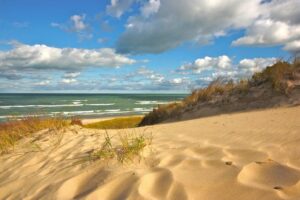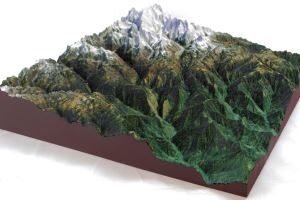Currently I am a tourist. It is fun to be in a different environment then your usual circumstances. It takes you out of patterns of monotony. When we travel our eyes are open to different lifestyles and we adapt new ideologies. It is great for people on an individual basis, but managing tourism on a large scale is still someone else’s job lol. So while a group of people in a specific site such as the Eiffel Tower may be prone to congestion if proper planning of infrastructure was not done. In particular, we will be analyzing LiDar and how we can utilize 3D data to plan tourism within parks.
National parks around the world are amazing sites that attract tourists nonstop. I plan on doing a large amount of trips to places like these soon, but I as a tourist am not aware of how precise my experience is. Park management involves the design and planning of how tourists like me will need to traverse the environment. The analysis of a large terrain gives us information on what is within our terrain. Elevation data, as well as land structural data, can be mapped in 3D. We can then create an ideal pathway for tourists to traverse through national parks. It would not be ideal for people to have log jams of movement within their environments. I recall when a time in high school quite vividly. My class and I were going on a trip to the Indiana Dunes. It is a great place to check out if you are in the Midwest of America and want to see some interesting wildlife as well as nature. The trail to get through the Indiana Dunes was extremely narrow and hard to traverse as a large group. We had to be in a single filed line the whole time throughout the trip. The state park, established in 1923 and opened in 1926, is about 3.4 square miles (8.8 square km) of shoreline, marshland, dunes, and forests near Chesterton.
I imagine when this State Park was being established, there was no LiDar technology to help people design the State Park in an efficient manner. A lot of the paths were likely paved by physical effort. There was not a succinct manner in which the landscape data was known. If one is to build a new national park anywhere in the world now, we would be able to look at the environmental 3D data properly. This would then dictate how we could build paths and manage the resources of the particular landscape in question.
With all this talk of nature, my inner hippie is growing. Seriously though, it is important for us to use technology to enable the betterment of our environment. This is essential and critical for the future and how we as humans will create our environment. This ranges from city planning to environmental planning, and this could include some of the interesting developments of planning civilization in space (many many many years away).
The post LiDar and its Applications Part 8 – Tourism appeared first on 3DPrint.com | The Voice of 3D Printing / Additive Manufacturing.




33 Replies to “LiDar and its Applications Part 8 – Tourism”
Comments are closed.